新学術領域染色体オーケストレーションシステム(染色体OS)
GRANT-IN-AID FOR SCIENTIFIC RESEARCH ON INNOVATIVE AREAS
“CHROMOSOME ORCHESTRATION SYSTEM (CHROMOSOME OS)”
GRANT-IN-AID FOR SCIENTIFIC RESEARCH ON INNOVATIVE AREAS
“CHROMOSOME ORCHESTRATION SYSTEM (CHROMOSOME OS)”
 白髭 克彦 SHIRAHIGE, Katsuhiko
白髭 克彦 SHIRAHIGE, Katsuhiko
東京大学 定量生命科学研究所 教授/所長
研究室HP:http://www.iam.u-tokyo.ac.jp/chromosomeinformatics/indexJ.html
Professor Institute of Molecular and Cellular Biosciences The University of Tokyo
Lab HP: http://www.iam.u-tokyo.ac.jp/chromosomeinformatics/index.html
分化過程では、染色体レベルでの大規模な3次元構造の変換が段階的に生じ、またこの変換が分化の正常な誘導に必須であると考えられています。
私はES細胞の神経分化に伴う染色体構造の大規模な変化を例に染色体の構造変化をHi-C、ChIA-PETといった技術を用いて解析し、染色体構造変化が機能情報へと変換される動態を理解したいと考えています。特に、コヒーシンおよびそのローダーであるNIPBL/MAU2複合体がこの染色体のマクロな構造変換と個々の遺伝子レベルでの転写伸長反応をどのように連携しているのか、転写装置の試験管内再構成系も取り入れ明らかにしていきたいと考えています。
It is believed that step by step conversion of 3D structure of chromosome (4D information) is essential for cell to continue down its path of differentiation.
To understand how chromosome 4D information is transformed into the functional genetic information, we will analyze the structural change of the chromosome during the neurodifferentiation of the embryonic stem cell using genomic technologies, such as Hi-C and ChIA-PET. Particularly, we are very much interested in clarifying the molecular link between high-order chromatin structure and regulation of elongation of RNA PolII that is supposed to be mediated by cohesin and NIPBL/MAU2 complex, a cohesin loading complex. For this end, we will adopt in vitro reconstitution system of early elongation complex to analyze direct involvement of cohesin and its loader in transcription.
 平野 達也 HIRANO, Tatsuya
平野 達也 HIRANO, Tatsuya
理化学研究所 主任研究員
研究室HP:http://www.riken.jp/chromdyna/
Chief Scientist, RIKEN
Lab HP: http://www.riken.jp/chromdyna/index_en.html
分裂期染色体の構築は、正確な遺伝情報を娘細胞へ伝達するために必須の過程である。本研究課題の目的は、試験管内に分裂期染色分体を再構成するという試みを通して、染色体の3D構築原理とその制御を理解することにある。
私たちは、これまでに、カエル精子核を精製タンパク質標品と混合することによって分裂期染色体様構造を再構成することに成功している。さらに、組換えサブユニットから再構成したコンデンシン I 複合体を利用して、個々のサブユニットの機能を検定する実験系も確立した。本研究課題では、これら2つの強力なアプローチを組み合わせて染色体の完全再構成系を確立し、個々の因子の機能とその協調原理を理解する。
The assembly of mitotic chromosomes is an essential prerequisite to their faithful segregation during cell division. The main goal of this project is to understand the molecular principle of three-dimensional architecture of mitotic chromosomes through a bold attempt to reconstitute them in a test tube.
We have been successful so far in reconstituting mitotic chromatids by incubating sperm chromatin with a minimum set of purified factors. Moreover, we have established an experimental system for dissecting the molecular function of the condensin I complex by using recombinant subunits in Xenopus egg cell-free extracts. In this project, we will combine these two powerful approaches to establish a “complete” chromosome reconstitution system.
 深川 竜郎 FUKAGAWA, Tatsuo
深川 竜郎 FUKAGAWA, Tatsuo
大阪大学 大学院生命機能研究科 教授
研究室HP:http://www.fbs.osaka-u.ac.jp/labs/fukagawa/index_j.html
Professor, Graduate School of Frontier Biosciences, Osaka University
Lab HP: http://www.fbs.osaka-u.ac.jp/labs/fukagawa/index.html
私たちの研究グループは、これまで、染色体分配の際に紡錘体微小管が捉える染色体上の特殊構造であるセントロメアの理解を目指した研究を行ってきた。一方で、セントロメアと染色体上でおこる他の生命現象を連携させて染色体全体をシステムとして理解しようとする視点には、欠けていた。
本領域では、領域内の多様な染色体研究者と密な共同研究を行い、セントロメアを通じた染色体の構築原理の解明を目指す。例えば、試験管内で構築した染色体様の構造にセントロメア機能を再構築したモデル化染色体の作成を通じて、染色体OSの理解に貢献する。
We have been studying on the centromere, which is crucial for faithful chromosome segregation. On the other hand, we have not tried to understand how centromeres are related to other chromosomal functions including DNA replication, transcription etc.
In this research group, we will collaborate with experts in each chromosome biology field and try to understand a principle of chromosome architecture through the collaborations. For example, we will try to create a “model chromosome” to assemble centromere structure on artificial chromatin and contribute to understanding chromosome OS.
 岩崎 博史 IWASAKI, Hiroshi
岩崎 博史 IWASAKI, Hiroshi
東京工業大学 大学院生命理工学研究科 教授
研究室HP:http://www.iwasakilab.bio.titech.ac.jp
Professor, School and Graduate School of Bioscience and Biotechnology, Tokyo Institute of Technology
Lab HP: http://www.iwasakilab.bio.titech.ac.jp/index-e.html
DNAの二重鎖切断(DNA double strand break; DSB)は、細胞にとって最も危機的なDNA損傷の一つである。DSBの修復には相同組換えが主要なDNA修復機構として機能する。
本新学術班では、DSBが導入された染色体がいかにDSB修復を実現しているのか、その調和の取れたメカニズム(オーケストレーションシステム;OS)について、染色体の時空間制御機構解析 (Hi-Cなど)、組換え反応の試験管内再構成系、さらに、リアルタイム解析・1分子解析などによって多面的に切り込む.4D情報解析のパイロット実験は、分裂酵母の接合型変換をモデル系とする.これらのアプローチにより、DSB修復装置が核内でどのように時空間を制御して作動するのか、その分子基盤や基本原理を明らかにする。
DNA double strand break (DSB) is the most serious form of DNA damage. Homologous recombination (HR) plays a very important role in the repair of this damage. In this study section, I will describe the molecular mechanism responsible for the repair of DSBs on chromosomes (HR-repair orchestration system).
To this end, I will elaborate on how multidisciplinary and comprehensive strategies, including analysis of temporal-spatial regulation of chromosome configuration (such as Hi-C), in vitro reconstitution of homologous recombination, and real-time and single-molecule assays of DNA strand exchange reactions, can be used to investigate this central issue in cell biology. In addition, as a pilot study, I will also study the molecular mechanisms of mating-type switching of fission yeast to obtain 4-D information (temporal development of chromosome configuration) on the mat locus in the nucleus. These approaches will further our understanding of how the various factors that form the DSB repair-apparatus and its fundamental mechanistic principles are orchestrated to work in an orderly manner in the nucleus.
 篠原 彰 Akira SHINOHARA
篠原 彰 Akira SHINOHARA
大阪大学 蛋白質研究所 教授
研究室HP:http://www.protein.osaka-u.ac.jp/genome/index.html
Osaka University, Institute for Protein Research, Professor
Lab HP: http://www.protein.osaka-u.ac.jp/genome/index.html
精子、卵子などの配偶子形成に必須の減数分裂期のゲノムは染色体OSがより劇的に変化するだけでなく、組換えなどのさまざまなDNA代謝反応が“制御された形”で起きる。
本研究では、減数分裂の染色体を染色体OSのモデル系として捉え、減数分裂期染色体構造、特にその基盤となる軸?ループ構造の構造を理解し、その上で起きる減数分裂期の組換えの制御の仕組みを分子レベルで明らかにすることを目的とする。基本染色体4D構造での組換えに関わるタンパク質の分布と動的な変化を調べるにより、組換えが染色体構造により制御されているメカニズムをゲノムワイドに解析する。
Meiosis, which produces haploid gametes for sexual differentiation, accompanies drastic changes in Chromosome Orchestration System (OS) and provides strict regulation on chromosome metabolisms such as recombination.
In this study, we will envision meiotic chromosomes as a manifestation of Chromosome OS and aim to reveal molecular mechanism of control for the recombination in the context of chromosome axis-loop configuration. By studying basic chromosome 4D structure and dynamics of protein involved in the recombination, we will understand the role of chromosome structure in the control of dynamics of recombination machinery.
 荒木 弘之 ARAKI, Hiroyuki
荒木 弘之 ARAKI, Hiroyuki
国立遺伝学研究所 教授
研究室HP:http://www.nig.ac.jp/labs/MicGen/index.html
Professor, National Institute of Genetics
Lab HP: http://www.nig.ac.jp/nig/research/organization-top/organization/araki
遺伝情報を担う染色体では様々な反応が調和して起こることにより、染色体がその構造も含めて安定に維持され、倍加し、娘細胞へと分配されていく。我々は、出芽酵母のin vitro DNA複製系を主に用いてこの問題に取り組もうとしている。
そのため複製機構の解析とそれに基づいて、クロマチン構造を持つDNAでも効率良く複製するin vitro系を構築する。そして、この系に種々のDNA動態に関わる因子を導入し、複製反応とそれらがどのように調和して進むかを調べ、3D染色体の構築原理に迫りたい。
Various reactions occur on chromosome, which carries the genetic information, in an orchestrated manner, so that the chromosome with proper structure is maintained stably, duplicated and segregated to daughter cells. We will study on orchestration of the reactions, using in vitro DNA replication system of budding yeast.
For this purpose, we will improve the system to replicate DNA efficiently even if DNA is chromatinized. Then, we will add the factors involved in chromosome dynamics other than DNA replication to the system, examine how various reactions proceed coordinately and reveal the principles of formation of 3D chromosome.
 広田 亨 HIROTA, Toru
広田 亨 HIROTA, Toru
公益財団法人がん研究会がん研究所 部長
研究室HP:http://www.jfcr.or.jp/tci/exppathol/index.html
Chief, Cancer Institute, Japanese Foundation for Cancer Research (JFCR)
Lab HP: http://www.jfcr.or.jp/tci/exppathol/index.html
染色体不安定性は、がん組織を構成する細胞の不均一性を増大させる要因であり、進行がんに共通してみられる性質です。安定した染色体継承のためには、M期染色体の構築、染色体と紡錘体の結合、姉妹染色分体の分離の制御が肝要で、本来細胞はこれらの過程を正確かつ確実に進めるための仕組みを備え持っています。われわれは、がん細胞が悪性化してく時間変化のなかで、どのようにこの仕組みが破綻し染色体不安定性の獲得に至るのか、染色体の巨視的・微視的構造変化を体系的に解析することによってその解答を求めます。
染色体OSの視点に立った細胞病態の解明により、がんの脆弱性に着眼した新たな治療法の導出に挑戦したいと考えています。
Chromosomal instability is a widespread pathological condition in malignancies, which propagates both numerical and structural chromosomal aberrations as cells proliferate. Although reduced fidelity of mitosis is thought to evolve aneuploid tumors, the explosion of our understanding of mitotic control in the last two decades has not uncovered models for chromosomal instability. Here we aim to articulate chromosome structure based on both microscopic and genetic analyses, and to characterize its chronological changes during acquisition of chromosomal instability.
These efforts should lead us to explore defective cellular physiology in malignancies, and thereby to facilitate developing cancer interventions targeting chromosomal instability.
 今井 由美子 IMAI Yumiko
今井 由美子 IMAI Yumiko
国立研究開発法人医薬基盤・健康・栄養研究所・感染病態制御ワクチンプロジェクト・プロジェクトリーダー
研究室HP:http://www.nibiohn.go.jp/activities/regulation-intractable-infectious-diseases.html
Project Leader of the Regulation of Intractable Infectious Diseases, National Institute of Biomedical Innovation, Health and Nutrition
Lab HP:http://www.nibiohn.go.jp/activities/regulation-intractable-infectious-diseases.html
ウイルスは宿主細胞の核機能を含む様々な細胞機能を利用・略奪することによって増殖します。そこで感染細胞の核内には、ウイルス・宿主相互作用を介した連続的な摂動が加わります。
本研究では、核内でウイルスゲノム(RNA)の転写・複製を行うインフルエンザウイルスをモデルとして、ウイルス感染に伴う染色体3次元構造の変化と染色体機能の連携、病態形成の背景となっている分子基盤を明らかにすることを目的としています。本研究成果は、ウイルス感染に対するシステムとしての染色体の可塑性の理解、さらに染色体オーケストレーション(OS)を標的とした治療法の開発に繋がることが期待されます。
Upon virus infection, virus-host interaction is triggered in the host, which regulates virus replication machinery as well as host immune responses, leading to the pathogenesis of virus infection. Influenza virus is a negative-sense RNA virus, and transcription and replication of the virus genome occur in the nucleus. Accumulating evidence shows that environmental stress can control higher-order chromatin structures, resulting in the regulation of chromatin function.
Our group is trying to systemically investigate the dynamic (4D) changes in higher-order chromatin structures following influenza virus infection, which link to transcriptional regulation involved in the pathogenesis of influenza virus infection. The data from our study may contribute to clarify the nature of chromatin orchestration system (OS) in response to virus infection, which could be a potential therapeutic target for virus infections.
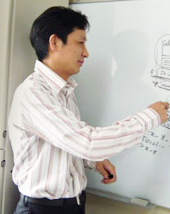 伊藤 武彦 ITOH, Takehiko
伊藤 武彦 ITOH, Takehiko
東京工業大学 大学院生命理工学研究科 教授
Professor, Graduate School of Bioscience and Biotechnology Tokyo Institute of Technology
まず、ChIA-PET, Hi-C法などNGSを用いた実験データからの情報学的な染色体立体構造予測アルゴリズムを構築し、他班員が取得するin vivo / in vitro系での実験データに適用して検証を加え、アルゴリズムの高精度化を継続的に図る。続いて得られた立体構造同士を比較するアルゴリズムを構築、異なる条件下や細胞腫など様々なレベルでの比較解析を実施することで、高次構造における様々な階層のビルディングブロックを抽出し、その普遍性と多様性の理解を目指す。
また総括班と連携のもと、「染色体OS情報プラットフォーム」を開発し、染色体に関わるあらゆる解析結果を1Dから4Dレベルで可視化、仮説構築が可能となるデータベースを目指す。
First, we will develop a computational algorithm for the prediction of chromosome tertiary structures based on NGS experimental data (ChIA-PET, Hi-C) and we will continuously maintain and develop our algorithm by using it for in vivo / in vitro experimental data, the results of which other members in this research group will produce. Subsequently, we will develop the algorithm to compare between tertiary structures and apply it to analyze data obtained under different experimental conditions or for different kinds of cells. Using these analyses, we will extract the various hierarchal levels of the important “building blocks” and try to understand their universality and diversity.
In addition, via the development of “chromosome OS platform,” we will try to visualize every analytical data at 1D to 4D levels with the objective to use this advanced platform to construct experimental hypothesis.
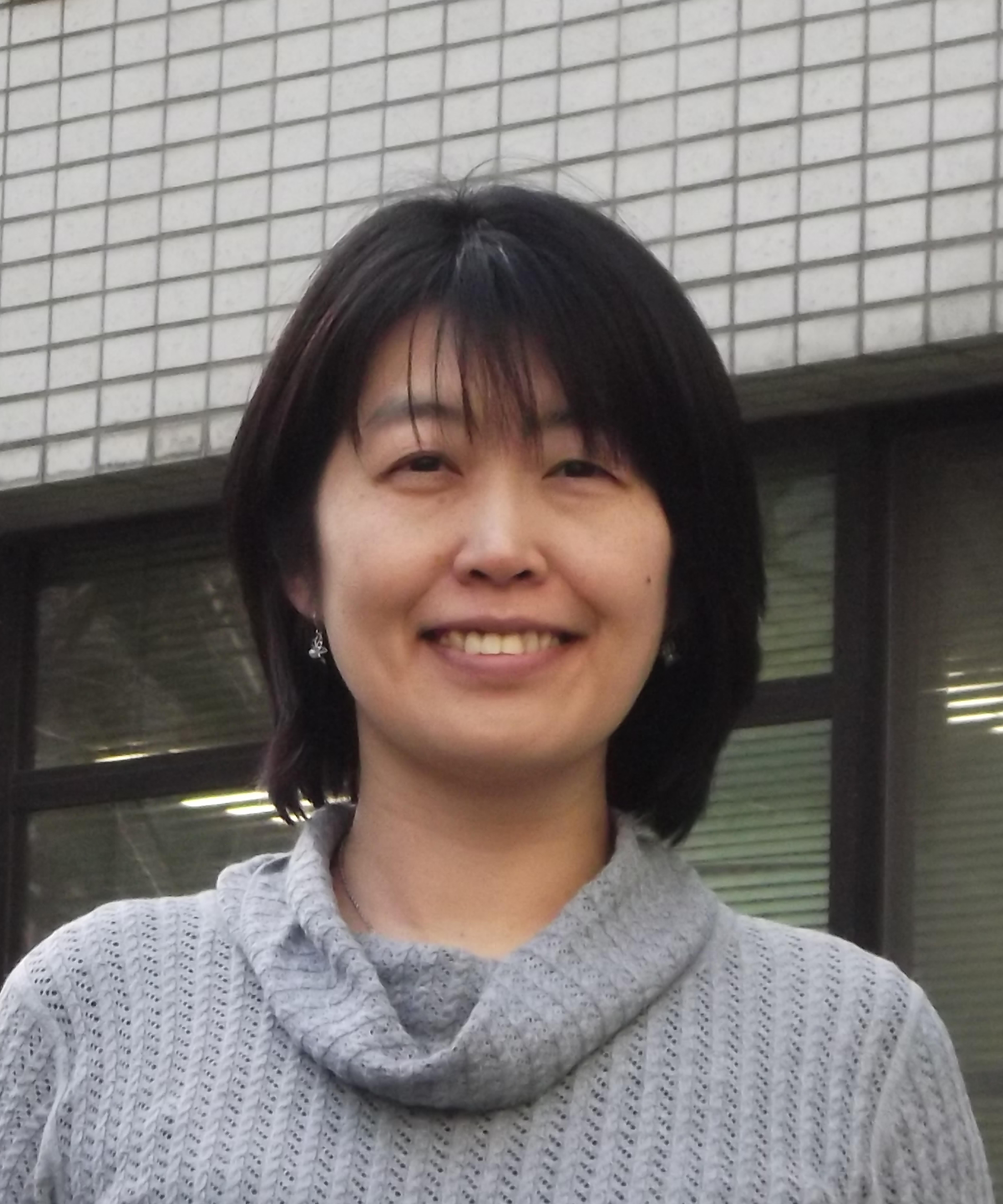 大杉美穂 OHSUGI, Miho
大杉美穂 OHSUGI, Miho
東京大学大学院総合文化研究科、教授
研究室HP:http://park.itc.u-tokyo.ac.jp/ohsugilab2013/
Professor, Graduate school of Arts and Sciences, The University of Tokyo
Lab HP: http://park.itc.u-tokyo.ac.jp/ohsugilab2013/
私たちは、受精過程とそれに引き続き起こる卵割分裂における染色体の動きとその制御機構、特に他の脊椎動物とは異なる哺乳動物に特異的な現象に興味をもっています。ツメガエル卵抽出液無細胞系は染色体研究に多くの知見をもたらしていますが、私たちは哺乳動物であるマウスの卵を用いた抽出液無細胞系の開発に取組み、両者には卵や初期胚の性質を反映した違いがあることを見いだしています。平野グループとの連携のもとこの実験系を用いることで、マウスとカエルの差異に着目しながら、分裂期染色体の構築の解明に取組みます。
We have been studying the cell cycle and chromosome dynamics during and following fertilization in mice with a focus on the mammalian-specific regulatory mechanisms. Xenopus egg extract is an excellent cell-free system, which has provided important knowledge to chromosome research field. We have been trying to establish mouse egg extract cell-free system that reflects the mammalian-specific oocyte features. In this study, we aim to reveal the global and mammalian-specific essential factors and processes to construct mitotic chromosomes by comparison and combination of Xenopus and mouse egg extract systems.
 石井 浩二郎 ISHII, Kojiro
石井 浩二郎 ISHII, Kojiro
大阪大学 大学院生命機能研究科 特任准教授
研究室HP:http://www.fbs.osaka-u.ac.jp/labs/ishii/
Specially Appointed Associate Professor, Graduate School of Frontier Biosciences, Osaka University
Lab HP: http://www.fbs.osaka-u.ac.jp/labs/ishii/
私たちは染色体の構造や編成に変化を誘導し、それが細胞に与えるインパクトを探ります。遺伝子配列の変異とは異なり、染色体の変化は、大規模なゲノムDNA量の変動や遺伝子量の不均一な変動など、いわゆる「染色体不安定性」に該当します。
染色体不安定性はがん細胞に高頻度に伴われる重要な形質ですが、不安定化した染色体が実際に細胞に対してどのような問題を引き起こし、例えばがん悪性化のような結果につながるのか、その過程に関する十分な理解は得られていません。モデル細胞として分裂酵母を用い、染色体変化に伴う細胞応答の4D変化を明らかにしたいと考えています。
In this joint research project, we are going to uncover the direct responses cells exhibit against the alteration in chromosome configuration and organization. Unlike mutations in genes, chromosomal alterations often elicit a large-scale change in the nuclear DNA content and also a twist of gene dosage, which can be analogous to the consequence of “chromosomal instability (CIN)”.
CIN is a critical trait frequently associated with cancer cells; however, it has been poorly understood what actually happens to the cells encountering CIN. Using fission yeast as a model system, we will try to elucidate the entire cascade of cellular responses provoked by the chromosomal alteration in 4-dimensional manner.
 永江 玄太 NAGAE, Genta
永江 玄太 NAGAE, Genta
東京大学 先端科学技術研究センター 助教
研究室HP:http://www.genome.rcast.u-tokyo.ac.jp/
Assistant Professor, Research Center for Advanced Science and Technology, The University of Tokyo
Lab HP: http://www.genome.rcast.u-tokyo.ac.jp/en/
細胞核内のクロマチン空間配置は細胞分化過程で巧妙に制御され、遺伝子発現パターンの構築に重要な役割を果たしています。NGSを用いたゲノム解析技術によって、クロマチンの物理的な近接関係がゲノムワイドに検出可能になりましたが、複雑なエピゲノム相互作用情報を明らかにするには、より効率的で定量性の高い方法が必要とされています。
我々は、ゲノム解析技術の改善を通して、核クロマチンの3D構築の解明に貢献したいと思います。
Spatial positioning of chromatin is well-organized and plays an essential role for establishment of gene expression patterns during cellular differentiation. Recently, NGS-based technologies have allowed us to detect their physical proximity in a genome-wide manner. However, more effective and quantitative approaches are needed to clarify the complicated information of epigenome interaction.
We would like to contribute to the understanding of 3D chromatin formation through the technology improvement.
 吉田 健一 YOSHIDA, Kenichi
吉田 健一 YOSHIDA, Kenichi
京都大学 腫瘍生物学 助教
研究室HP:http://plaza.umin.ac.jp/kyoto_tumorpatho/
Assistant professor, Department of Pathology and Tumor Biology, Graduate School of Medicine, Kyoto University
Lab HP: http://plaza.umin.ac.jp/kyoto_tumorpatho/
私たちの研究室ではこれまで急性骨髄性白血病(AML)や骨髄異形成症候群(MDS)におけるゲノム異常を次世代シークエンサーを用いて解析してきましたが、その中でコヒーシンやCTCFの体細胞変異やそれらをコードする染色体領域の欠失などが成人のAMLやMDSおよびダウン症候群児に発症する急性巨核芽急性白血病にみられることを報告しました。
現在はさらにマウスモデルなどの解析により、コヒーシンの機能異常による腫瘍化のメカニズムを研究しています。
Previously, we analyzed the genetic alterations in acute myeloid leukemia (AML) and myelodysplastic syndromes (MDS) using next-generation sequencing technologies, and indentified a number of novel genetic abnormalities in these neoplasmas. Among these, we identified somatic mutations of components of the cohesin complex and CTCF and chromosomal abnormalities involving these genes in adult AML/MDS as well as Down syndrome-related acute megakaryoblastic leukemia.
Currently, we are working on the mechanism by which deregulated cohesin function lead to tumorigenesis in a mouse model.
 岡田 由紀 OKADA, Yuki
岡田 由紀 OKADA, Yuki
東京大学 定量生命科学研究所 准教授
Associate Professor, Institute of Molecular and Cellular Biosciences, The University of Tokyo
私達の研究室では精子のユニークなクロマチン構造を解明し、核凝集やヒストン残存の規則性および生物学的意義を明らかにすることを目標としています。新学術班では白髭グループの分担者として、次世代シークエンシング技術を用いてマウス精子クロマチンの高次構造に迫りたいと考えています。
Our goal is to elucidate the unique chromatin structure of sperm, especially regarding the regularity and physiological function of sperm chromatin condensation due to massive histone-protamine replacement. In this group, we collaborate with Dr. Shirahige and some other members to clarify the high-order structure of mouse sperm chromatin using next-generation sequencing techniques.
 篠原 美紀 SHINOHARA, Miki
篠原 美紀 SHINOHARA, Miki
大阪大学蛋白質研究所・准教授(2017年3月まで)
近畿大学農学部バイオサイエンス学科分子生物学研究室・教授(2017年4月以降)
研究室HP:http://www.protein.osaka-u.ac.jp/genome/
(until March)
Associate Professor, Institute for Protein Research, Osaka University(until March)
Professor, Faculty of Agriculture, Department of Bioscience, Kindai University
DNA二重鎖切断修復は染色体を安定に維持するために重要な機能を果たしている。ヒトにおいて、細胞の置かれた状況や損傷の部位に応じた適切な修復が行われなければ、ゲノム不安定化から細胞がん化につながる。私達は、ヒト細胞におけるDNA二重鎖切断修復の正確性を保証する機構とその破綻メカニズムについて明らかにします。
DNA double-strand break (DSB) repair plays an important role to maintain genome integrity. In humans, appropriate repair-pathway must be selected depending on the circumstances of the cell or properties of the damage, otherwise it promotes genomic instability which often causes cell tumorigenesis. Here, we will analyze the molecular mechanism to maintain accuracy of DSB repair, and analyze how that system is broken at the beginning of cell tumorigenesis.
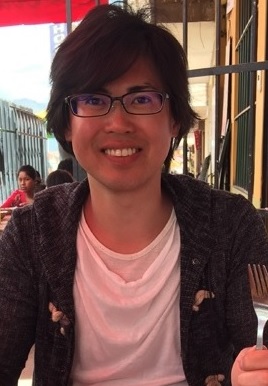 佐藤 薫 Kaoru, Sato
佐藤 薫 Kaoru, Sato
東京大学大学院理学系研究科生物科学専攻RNA生物学研究室、助教
研究室HP:http://www-siomilab.biochem.s.u-tokyo.ac.jp/index.html
Assistant Professor, Department of Biological Sciences, Graduate School of Science, The University of Tokyo
Lab HP: http://www-siomilab.biochem.s.u-tokyo.ac.jp/index.html
ショウジョウバエ Piwi-piRNA核内複合体はトランスポゾンの発現を転写レベルで抑制するが、その分子機構は未だ不明である。私たちは、Piwi-piRNA核内複合体がヌクレオソームやゲノムDNAと相互作用していることを明らかにしており、それらのヒストン修飾状態や相互作用ゲノム領域を決定することで、トランスポゾンの転写抑制機構に迫りたい。
Piwi-piRNA (PIWI-interacting RNA) nuclear complex represses the expression of Transposon transcriptionally in Drosophila ovarian somatic cell. Recently, we found that the Piwi-piRNA complex associates with Nucleosomes and genomic DNA. To address the molecular mechanism of transcriptional silencing of transposons by the complex, we will examine the histone modifications and genomic regions associated with the Piwi-piRNA complex.
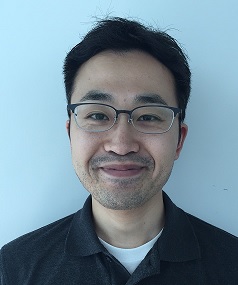 山中 総一郎 Soichiro, Yamanaka
山中 総一郎 Soichiro, Yamanaka
慶應義塾大学 医学部、助教
研究室HP:http://siomilab.med.keio.ac.jp
Instructor, Keio University School of Medicine
Lab HP: http://siomilab.med.keio.ac.jp
私たちはトランスポゾンに代表されるゲノム上の反復配列に興味を持っています。本領域では反復配列が果たす遺伝子発現制御システムや染色体の構造維持など、その特殊な役割を明らかにしていきます。
There is an ongoing battle between host genome and transposons. We would like to understand the multifaceted nature of transposons, such as invaders or integral components in the genome, with biochemical and bioinformatic tools.
 新海 創也 Soya, Shinkai
新海 創也 Soya, Shinkai
理化学研究所 生命システム研究センター、研究員
研究室HP:http://so.qbic.riken.jp/
Research Scientist, RIKEN Quantitative Biology Center (QBiC)
Lab HP: http://so.qbic.riken.jp/
われわれが構築してきたヌクレオソームを基本ユニットとする物理モデルに、ChIP-seqによるヒストン修飾情報やHi-C等の近接頻度情報、およびChIA-PETによる相互作用情報をメタ情報として実装することで、クロマチンドメイン内での複数の遺伝子座のダイナミックな相互作用を明らかにします。
We will uncover dynamic and cooperative interactions among gene loci within a chromatin domain using numerical simulations based on a theoretical model of chromatin domains, which we have developed recently. Especially, in order to develop an innovative area in Chromosome OS, we will combine molecular biological information from ChIP-seq, Hi-C, and ChIA-PET as meta-information with our physical model.
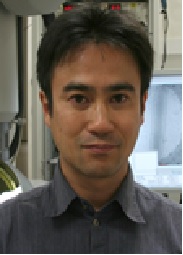 真柳 浩太 Kouta, MAYANAGI
真柳 浩太 Kouta, MAYANAGI
九州大学生体防御医学研究所構造生物学分野、助教
研究室HP:http://vsb.bmr.kyushu-u.ac.jp/VSB/index.html
Assistant Professor, Medical Institute of Bioregulation, Kyushu University
Lab HP: http://vsb.bmr.kyushu-u.ac.jp/VSB/index.html
染色体動態を担う超分子複合体の機能構造連関の研究には、細胞から原子レベルまでのワイドレンジをカバーする電子顕微鏡が大変に有効です。クロマチンリモデリング因子FACTや、複製ヘリケース複合体等をターゲットとし、近年飛躍的に分解能が向上したクライオ電子顕微鏡を用いて解析し、その機能構造連関に迫ります。
A huge number of proteins are involved in chromosome dynamics, and they often assemble to form huge complexes, accomplishing each function through highly regulated manner. Due to the developments of the new generation detectors, electron microscopic single particle analysis is now one of the most powerful methods to study such complex system. In this research program, we will study the structure and the molecular mechanism of DNA-protein assemblies, such as FACT-nucleosome and replicative helicase complex, by single particle analysis.
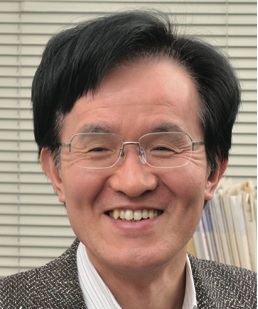 石井 俊輔 Shunsuke, Ishii
石井 俊輔 Shunsuke, Ishii
理化学研究所、上席研究員
研究室HP:http://rtcweb.rtc.riken.jp/lab/mg/mg.html
Distinguished Senior Scientist, RIKEN
Lab HP: http://rtcweb.rtc.riken.jp/lab/mg/en/mg.html
私達は、ストレス応答性のATF2ファミリー転写因子のクロマチン構造制御における役割に興味を持っています。最近このファミリーメンバーの1つであるATF7が、ストレスによる現世代および次世代でのテロメア短縮に関与することを見出しています。本研究ではこの分子メカニズムを明らかにしたいと考えています。
We are interested in the role of ATF2 family of transcription factors in the regulation of chromatin structure. Recently, we have found that ATF7, one member of this family, is involved in the stress-induced telomere shortening in the present and next generations. In this group, we aim to clarify the mechanism of this phenomenon.
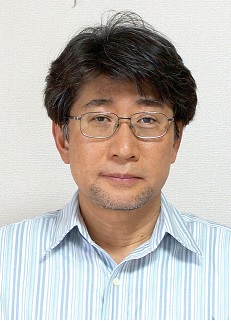 舛本 寛 Hiroshi, Masumoto
舛本 寛 Hiroshi, Masumoto
かずさDNA研究所、室長
研究室HP:http://www.kazusa.or.jp/j/laboratories/lab_ce.html
Head of the Laboratory, Kazusa DNA Research Institute
Lab HP: http://www.kazusa.or.jp/e/laboratories/lab_ce.html
セントロメアのサテライトDNAには、CENP-Aクロマチンとヘテロクロマチンが互いに拮抗しながら集合し染色体分配機能統合体を形成するが、そのメカニズムは不明である。私達は、ヒト人工染色体を用いてセントロメアの集合機構を解明し、ヘテロクロマチンとの集合バランスの変動が引き起こす影響について調べる。
Centromere chromatin including CENP-A assembles on the centromeric satellite DNA. On the same satellite DNA, antagonizing heterochromatin also assembles. The mechanisms by which centromere chromatin impacts on the establishment and maintenance of proper centromere function for the chromosome segregation process have not been clarified. We will analyze how the centromere functional structure assembles and maintains on the satellite DNA using human artificial chromosome system, and how the shift of the chromatin assembly balance between heterochromatin influences the functional structure.
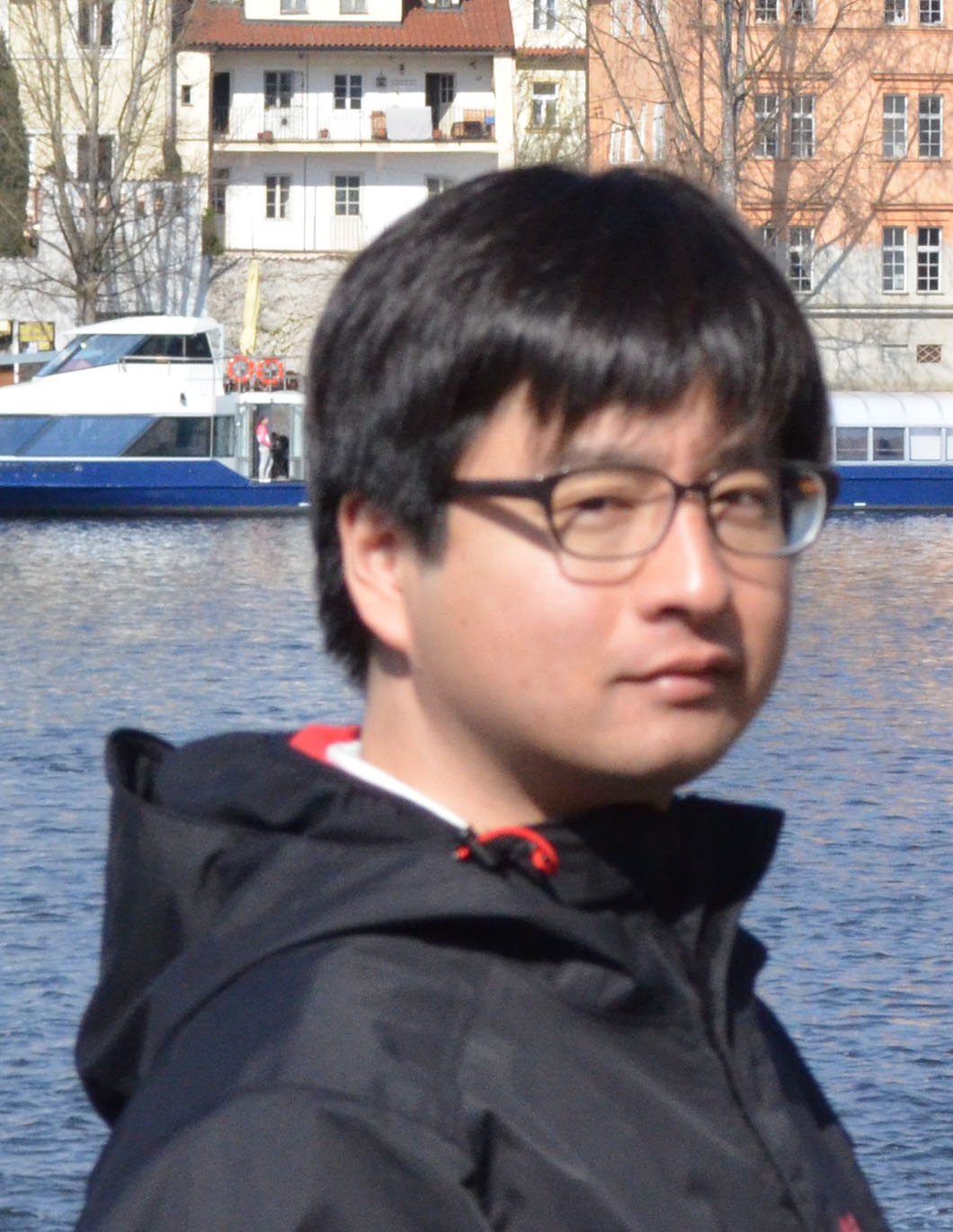 村山 泰斗 Yasuto, Murayama
村山 泰斗 Yasuto, Murayama
国立遺伝学研究所 新分野創造センター染色体生化学研究室、准教授
研究室HP:準備中
Associate Professor, Chromosome Biochemistry Laboratory • Murayama Group, National Institute of Genetics
Lab HP:
Smc5/6複合体は、 DNA 複製、相同組換え、染色体分配などゲノム動態の広域に機能する。しかし、これらの反応でどのように機能するかは不明である。本研究は、試験管内再構成解析を中心に、Smc5/6複合体の生化学的性質を明らかにし、その機能の理解を目指す。
The ring-shaped Smc5/6 complex functions in DNA replication, recombination as well as chromosome segregation. In this study, I will biochemically reconstitute the Smc5/6 complex to understand its functions in the broad range of chromosome biology.
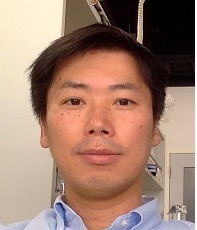 竹林 慎一郎 Shin-ichiro, Takebayashi
竹林 慎一郎 Shin-ichiro, Takebayashi
三重大学大学院医学系研究科、講師
研究室HP:http://kyoin.mie-u.ac.jp/profile/2922.html
Instructor, Mie University Graduate School of Medicine
Lab HP: http://kyoin.mie-u.ac.jp/profile/2922.html
染色体複製ドメイン構造(DNA複製の開始や複製フォークの進行が協調して制御される染色体構造単位)を調べることができる新しい技術を用い、これまでアプローチが困難であった個々の細胞レベルでの染色体構造制御を明らかにすることを目指します。
We will investigate structural characteristics of mammalian chromosomes at the level of individual cells using a novel technique for analyzing replication domains (chromosomal unit defined by DNA replication timing). Our goal is to uncover both dynamic and static properties of chromosomal domains and their functional significance.
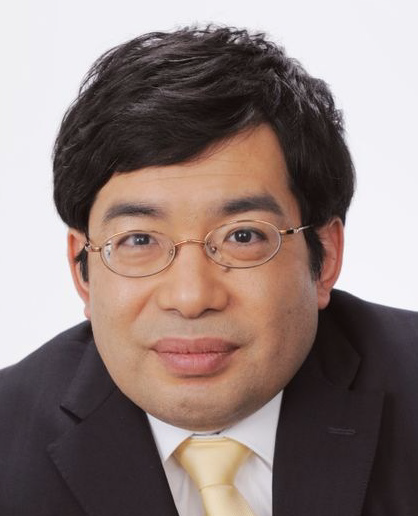 中井 謙太 Kenta, Nakai
中井 謙太 Kenta, Nakai
東京大学医科学研究所、教授
研究室HP:http://fais.hgc.jp/
Professor, The Institute of Medical Science, the University of Tokyo
Lab HP: http://fais.hgc.jp/
細胞の種類によってエンハンサーの作用が異なる等の現象を、Hi-C/ChIA-PET/ChIP-seq等のゲノムワイド情報を通して理解するためのプラットフォーム(レポジトリシステム)を構築し、班員からのデータやフィードバックを受け付ける。
To understand why some enhancers work differently in different cell types, we will construct a platform (i.e., a repository system) that collects genome-wide data on chromatin structures via various experiments, such as Hi-C/ChIA-PET/ChIP-seq, then supporting their visual/clearer interpretation.
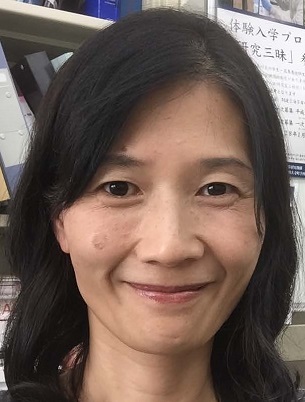 坪内 知美 Tomomi, Tsubouchi
坪内 知美 Tomomi, Tsubouchi
自然科学研究機構 基礎生物学研究所、准教授
研究室HP:http://www.nibb.ac.jp/stemcell
Associate Professor, National Institutes of Natural Sciences, National Institute for Basic Biology
Lab HP: http://www.nibb.ac.jp/stemcell
本研究では染色体OS研究に「多能性誘導」という時間軸を導入します。分化した細胞に、多能性(体を構成する全ての細胞種に分化する能力)を導入する技術は、再生医療へ応用が期待されていますが、その分子機構は明らかになっていません。私たちは細胞融合の系とイメージングを駆使してこの過程の染色体OSに迫ります。
We will investigate roles of chromosome OS during the course of reprogramming towards pluripotency (the ability to differentiate into all cell types that compose one’s body). There are high expectations for reprogramming technology that allows introduction of pluripotency into differentiated cells for their use in regenerative medicine. However, the underlying molecular mechanisms that allow cellular reprogramming still remain elusive. We will approach this question by exploiting cell-fusion system and imaging technology.
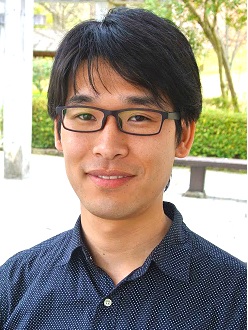 落合 博 Hiroshi, Ochiai
落合 博 Hiroshi, Ochiai
広島大学理学研究科数理分子生命理学専攻、特任講師
研究室HP:http://researchmap.jp/HiroshiOchiai/
Lecturer (Special appointment), Department of Mathematical and Life Sciences, Graduate school of Science, Hiroshima University
Lab HP: https://www.researchgate.net/profile/Hiroshi_Ochiai3
近年、3C関連技術により遺伝子発現とゲノム領域間相互作用の関係が明らかになりつつあるが、これらが如何にして1細胞中で動的に振る舞うかについては未だに謎が多い。本研究では、特定内在遺伝子の核内局在および転写活性の同時可視化技術を利用し、高次ゲノム構造の動態と転写活性の関係性解明を目指す。
Recent advancement of 3C related techniques allows us to be approaching an understanding of the relationship between gene regulation and genomic interactions. However, because of technical difficulties, how dynamically they behave in a single cell is still elusive. In this study, using a live-imaging method for simultaneous measurements of the transcriptional activity and nuclear position of endogenous genes, I will try to elucidate the dynamic relationship between higher nuclear organization and gene regulation.
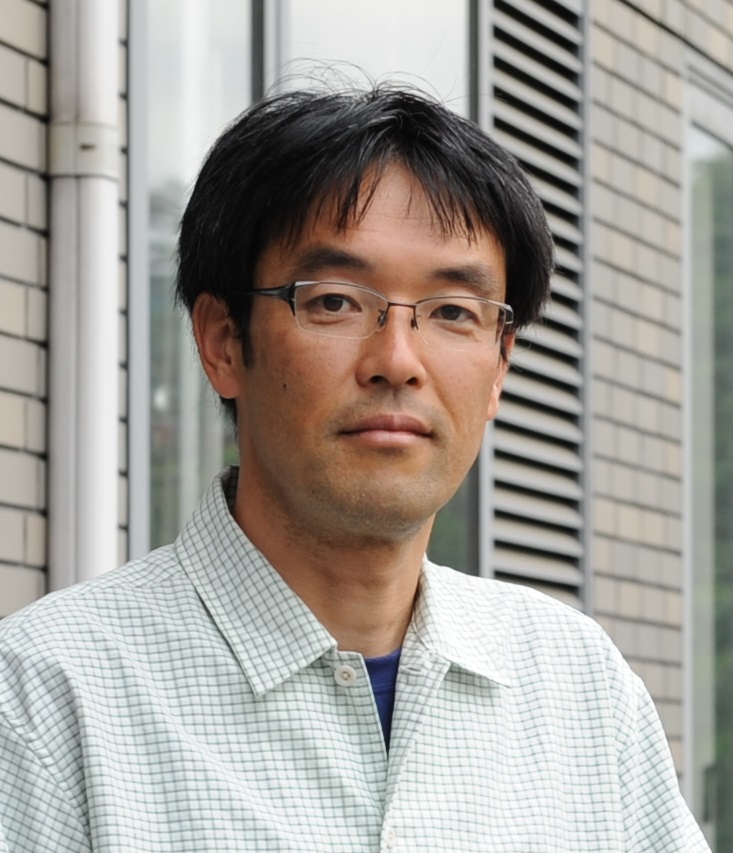 立花 誠 Makoto, Tachibana
立花 誠 Makoto, Tachibana
徳島大学先端酵素学研究所、教授
研究室HP:https://ouyoukouso01.ait231.tokushima-u.ac.jp/research.html
Professor, Institute for Advanced Enzyme Research, Tokushima University
Lab HP: https://ouyoukouso01.ait231.tokushima-u.ac.jp/research.html
胚性幹細胞の増殖や未分化性維持におけるH3K9メチル化の意義を明らかにする。また、メチル化酵素と脱メチル化酵素がどのように協調しあってH3K9メチル化のレベル維持に関わっているのかを明らかにする。
Understanding the biological significance of H3K9 methylation for embryonic stem cell functions
Understanding the mechanistic interplay between methyltransferases and demethylases for H3K9 methylation homeostasis
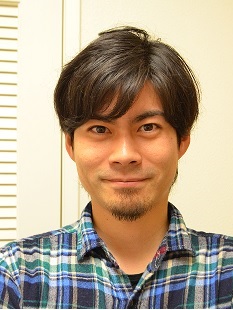 林 眞理 Makoto, HAYASHI
林 眞理 Makoto, HAYASHI
京都大学白眉センター/大学院生命科学研究科、特定助教
研究室HP:http://www.fish.lif.kyoto-u.ac.jp
Program-specific assistant professor, The Hakubi Center for Advanced Research/Graduate School of Biostudies, Kyoto University
Lab HP: http://www.fish.lif.kyoto-u.ac.jp
染色体の末端はテロメアによって保護されています。この保護が解かれると染色体末端が融合し、細胞周期停止、細胞死や染色体不安定化、ひいてはがん化など様々な問題が引き起こされます。
我々は特に、染色体融合によって引き起こされる有糸分裂期(Mitosis)停止に着目し、そのメカニズムを明らかにすることを目指します。
Chromosome ends are protected by telomeres. Dysfunctional telomeres result in chromosome fusions, which eventually lead to many problems, including cell cycle arrest, cell death, chromosome instability and tumorigenesis. We are currently interested in the molecular mechanism of the cell cycle arrest in mitosis, which is induced by chromosome fusion.
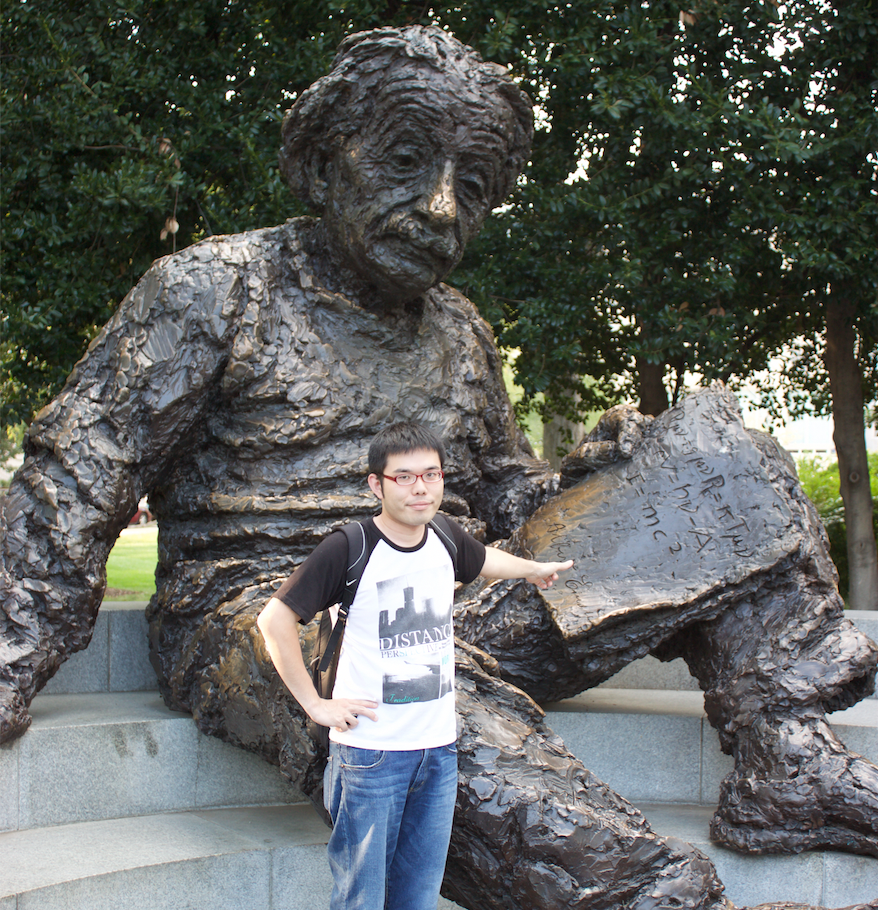 境 祐二 Yuji Sakai
境 祐二 Yuji Sakai
東京大学医学系研究科、助教
研究室HP:http://square.umin.ac.jp/molbiol/index.html
Graduate School and Faculty of Medicine, The University of Tokyo
Lab HP: http://square.umin.ac.jp/molbiol/english/index.html
間期から分裂期にかけての染色体の時空間における構造変化について数理的手法を用いて研究しています。コンデンシンやコヒーシンといった関連因子の局所的な機能と染色体の大局的な構造変化との結びつきに興味があります。
We study mechanisms of mitotic chromosome assembly and how they segregate from each other by using theoretical methods. The key players of chromosome assembly and their activities have been cleared experimentally but it is largely unclear how they assemble global chromosomes.
We are interested in relationship of local molecular activities to global chromosome assembly.
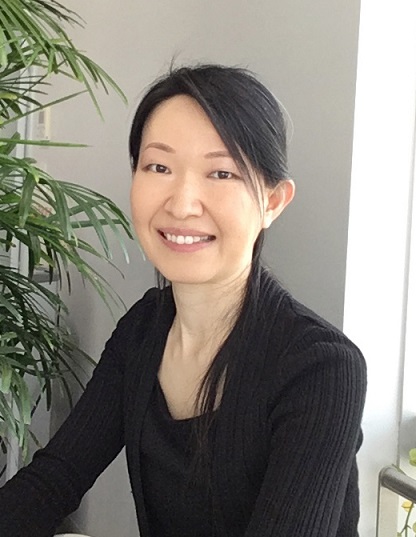 西山 朋子 Tomoko Nishiyama
西山 朋子 Tomoko Nishiyama
名古屋大学 大学院理学研究科、准教授
研究室HP:http://www.bio.nagoya-u.ac.jp/~nishiyama/Nishiyamalab-home.html
Professor, Medical Institute of Bioregulation, Kyushu University
Lab HP: http://www.bio.nagoya-u.ac.jp/~nishiyama/Nishiyamalab-home-en.html
姉妹染色分体間接着は染色体均等分配に不可欠な機構であるが、未だにその分子機序は本質的な理解に至っていない。本研究では接着を司るコヒーシン複合体の一分子ダイナミクスとメカニクスを明らかにすることで接着構築原理を理解するとともに、染色体構築機構の一分子階層における理解を深めたい。
Sister chromatid cohesion is an essential process towards accurate chromosome segregation. Cohesion is mediated by ring-shaped cohesin complex which tethers two replicated DNA molecules in-trans until chromosomes are separated. On the other hand, cohesin is also thought to change chromatin structure in-cis to regulate gene expression in interphase nucleus. We aim at understanding how cohesin organizes chromatin structure in two different modes – in-trans and in-cis – in single-molecule resolution, and how these changings of chromatin structure are translated to cellular functions.
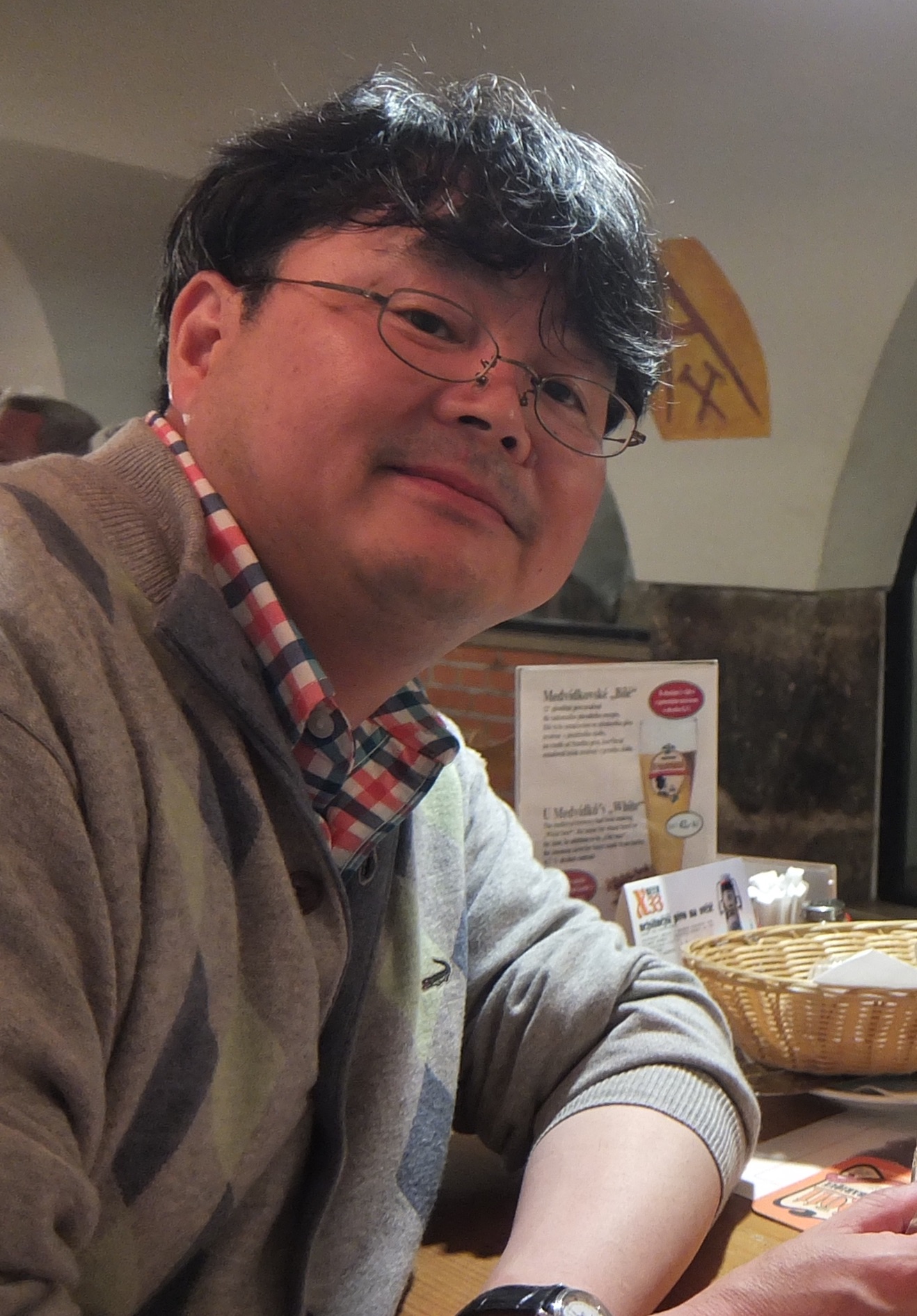 小布施 力史 Chikashi OBUSE
小布施 力史 Chikashi OBUSE
大阪大学 大学院理学研究科・理学部 生物科学専攻・生物科学科、教授
研究室HP:http://www.bio.sci.osaka-u.ac.jp/bio_web/lab_page/obuse/
Professor, Graduate School of Science, Osaka University
Lab HP: http://www.bio.sci.osaka-u.ac.jp/bio_web/lab_page/obuse/
ヘテロクロマチンは核内でまるい形のヘテロクロマチンボディーを形成し、核膜や核小体の縁に局在する。ある種のHP1結合タンパク質を細胞内で増減することによりヘテロマチンボディーの形成が阻害されることに着目して、ヘテロクロマチンボディーの成り立ちや配置について議論したい。
Heterochromatin forms round shape, called heterochromatin body and localizes along with nuclear or nucleolar peripheries. We have revealed that some HP1 binding proteins affects the formation and localization of heterochromatin body. Based on this observation, we will try to elucidate factors and processes for formation of heterochromatin body.
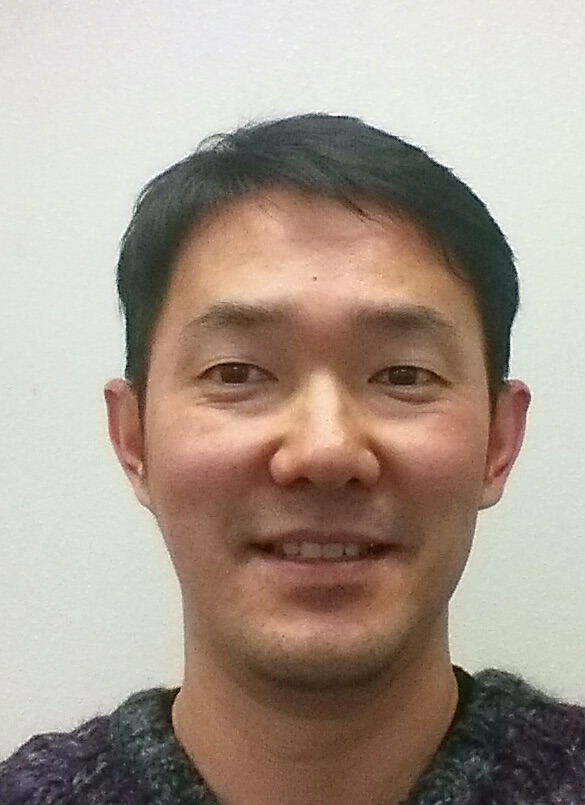 宮成 悠介 Yusuke Miyanari
宮成 悠介 Yusuke Miyanari
自然科学研究機構 生命創成探究センター 核内ゲノム動態研究グループ、准教授
研究室HP:http://www.nibb.ac.jp/miyalab/
National Institute for Basic Biology, Exploratory Research Center on Life and Living Systems
Lab HP: http://www.nibb.ac.jp/miyalab/
我々は核内のクロマチン高次構造に注目して研究を進めています。本新学術では特に、クロマチンアクセシビリティを制御する因子を網羅的に同定し、それら因子の機能解析を先進的な技術を応用することによって明らかにしていきます。
We have a great interest in higher order of chromatin structures. We are trying to discover novel players to regulate chromatin accessibility to understand how cell type specific chromatin structure is established.
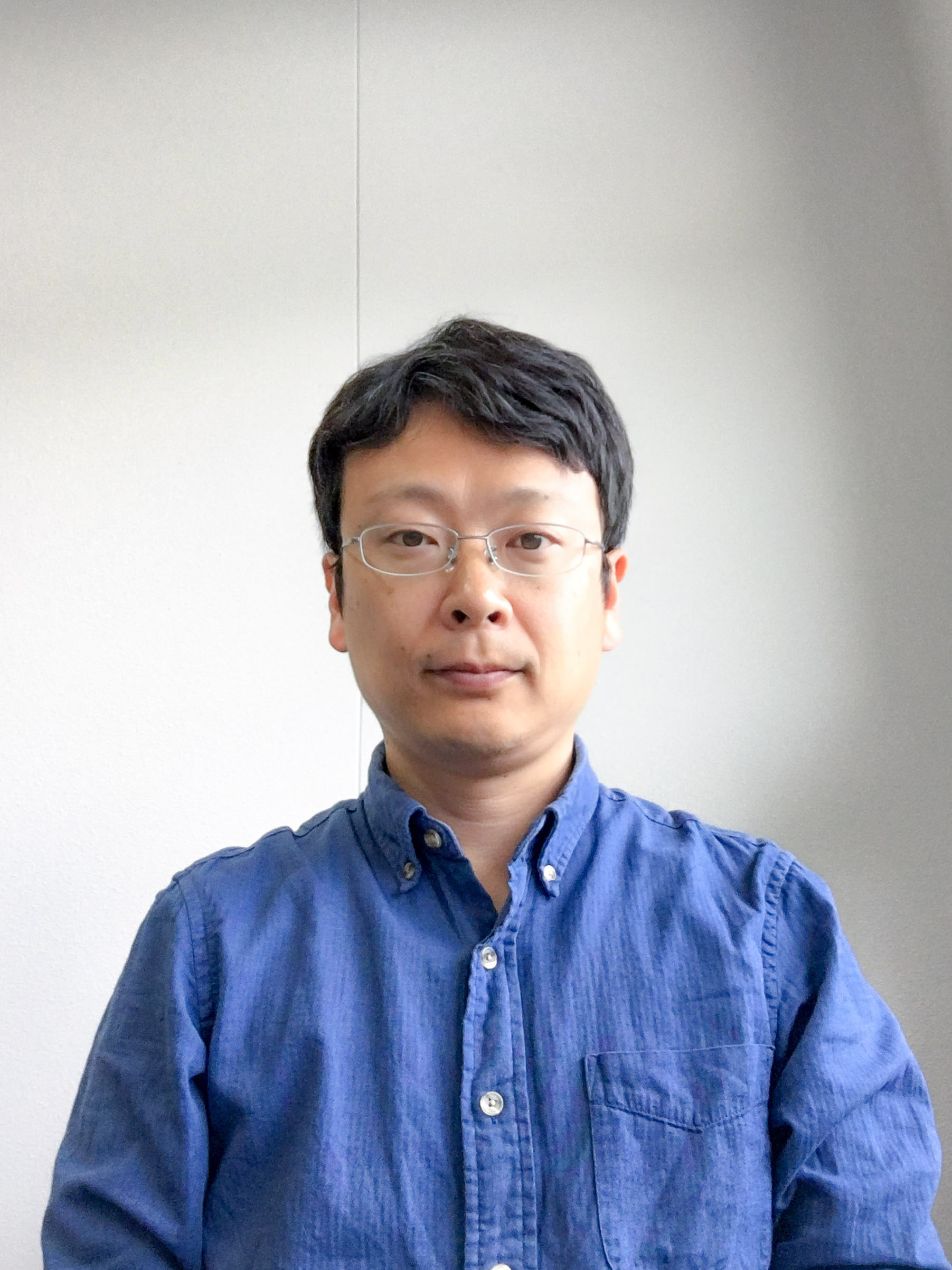 高橋 達郎 Tatsuro Takahashi
高橋 達郎 Tatsuro Takahashi
九州大学大学院理学研究院、准教授
研究室HP:http://www.biology.kyushu-u.ac.jp/~chromosome/top.html
Associate professor, Graduate School of Science, Kyushu University
Lab HP: http://www.biology.kyushu-u.ac.jp/~chromosome/top.html
相同性依存的修復はDNA二重鎖の切断修復にきわめて重要な反応であり、変異や染色体異常を防ぐためには塩基レベルでの正確性が要求されます。我々は、試験管内再現系と次世代シーケンス技術を組み合わせ、相同性依存的修復の正確性を担保するメカニズムの解明に取り組みます。
Homology-dependent repair (HDR) is a fundamental repair pathway for DNA double-strand breaks. HDR needs to be highly accurate to prevent mutations and chromosome aberrations. By combining in vitro models of HDR and high-throughput sequencing of the reaction intermediates, we study the molecular mechanism that ensures the accuracy of HDR.
 舛本 寛 Hiroshi Masumoto
舛本 寛 Hiroshi Masumoto
かずさDNA研究所、室長
研究室HP:http://www.kazusa.or.jp/laboratories/advanced-department/chromosome-lab/
Kazusa DNA Research Institute、Head of the Laboratory
Lab HP: http://www.kazusa.or.jp/laboratories/advanced-department/chromosome-lab/
セントロメアのサテライトDNAには、CENP-Aクロマチンとヘテロクロマチンが互いに拮抗しながら集合し染色体分配機能統合体を形成するが、そのメカニズムは不明である。私達は、ヒト人工染色体を用いてセントロメアの集合機構を解明し、ヘテロクロマチンとの集合バランスの変動が引き起こす影響について調べる。
Centromere chromatin including CENP-A assembles on the centromeric satellite DNA. On the same satellite DNA, antagonizing heterochromatin also assembles. The mechanisms by which centromere chromatin impacts on the establishment and maintenance of proper centromere function for the chromosome segregation process have not been clarified. We will analyze how the centromere functional structure assembles and maintains on the satellite DNA using human artificial chromosome system, and how the shift of the chromatin assembly balance between heterochromatin influences the functional structure.
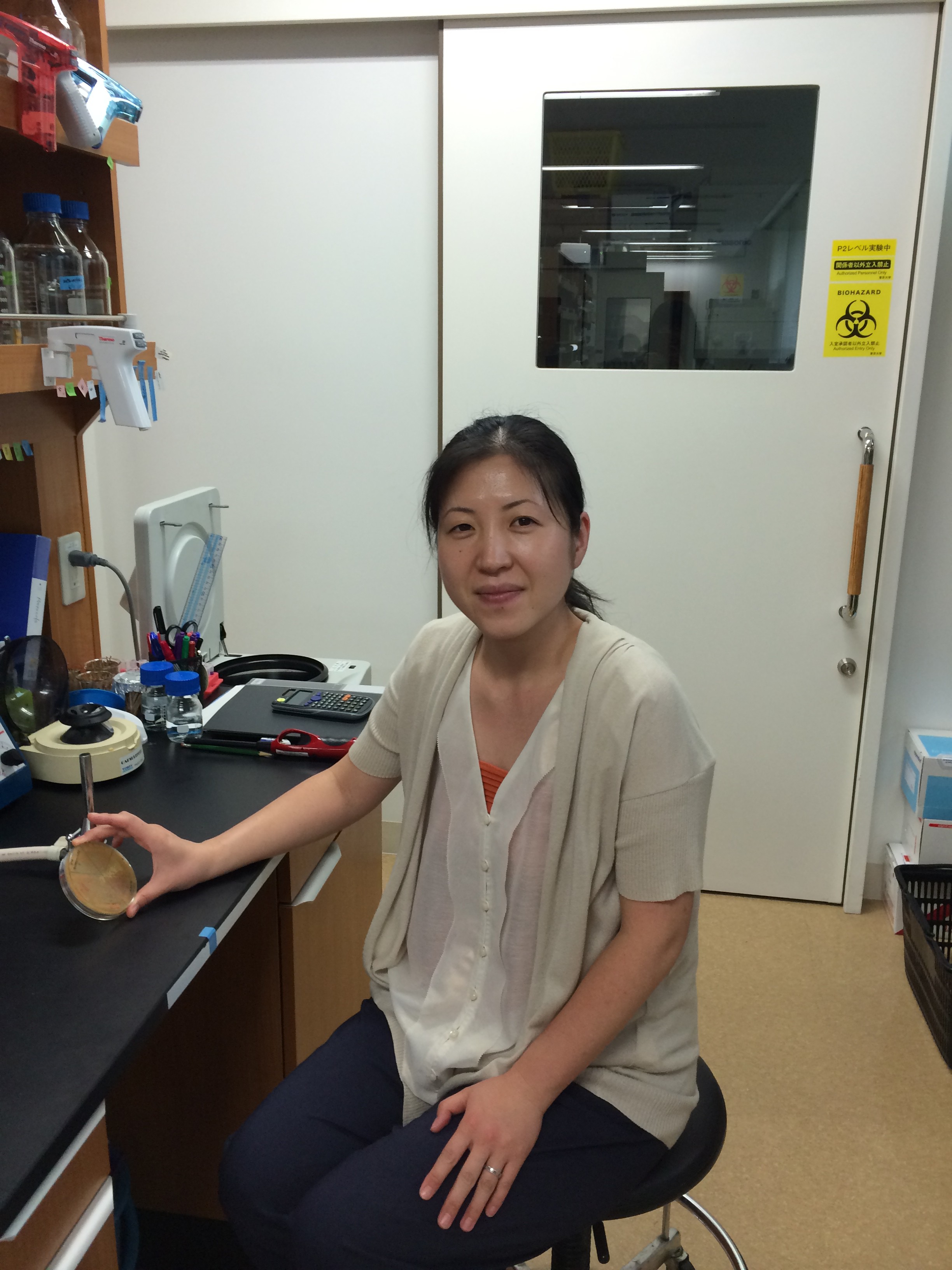 佐々木 真理子 Mariko Sasaki
佐々木 真理子 Mariko Sasaki
東京大学 定量生命科学研究所、助教
研究室HP:http://lafula-com.info/kobayashiken/CytoGen/index.html
Assistant professor, Institute for Quantitative Biosciences, The University of Tokyo
Lab HP: http://lafula-com.info/kobayashiken/CytoGen/index.html
DNA複製装置の進行が止まるとDNA二重鎖切断ができやすいが、その修復機構は不明である。本研究では、複製阻害時に生じたDNA二重鎖切断がどのような分子機構で修復されるのかを解明し、細胞周期の進行におけるDSB修復機構の多様性を明らかにしたい。
DNA double-strand breaks (DSB) are formed when replication fork progression is inhibited. However, it remains poorly understood how these DSBs are repaired. In this study, I aim to uncover the molecular mechanisms by which DSBs are repaired in the context of broken replication forks.
 林 眞理 Makoto Hayashi
林 眞理 Makoto Hayashi
京都大学白眉センター/大学院生命科学研究科、特定助教
研究室HP:http://www.fish.lif.kyoto-u.ac.jp
Program-specific assistant professor, The Hakubi Center for Advanced Research/Graduate School of Biostudies, Kyoto University
Lab HP: http://www.fish.lif.kyoto-u.ac.jp
染色体の末端はテロメアによって保護されています。この保護が解かれると染色体末端が融合し、細胞周期停止、細胞死や染色体不安定化、ひいてはがん化など様々な問題が引き起こされます。
我々は特に、染色体融合によって引き起こされる有糸分裂期(Mitosis)停止に着目し、そのメカニズムを明らかにすることを目指します。
Chromosome ends are protected by telomeres. Dysfunctional telomeres result in chromosome fusions, which eventually lead to many problems, including cell cycle arrest, cell death, chromosome instability and tumorigenesis.
We are currently interested in the molecular mechanism of the cell cycle arrest in mitosis, which is induced by chromosome fusion.
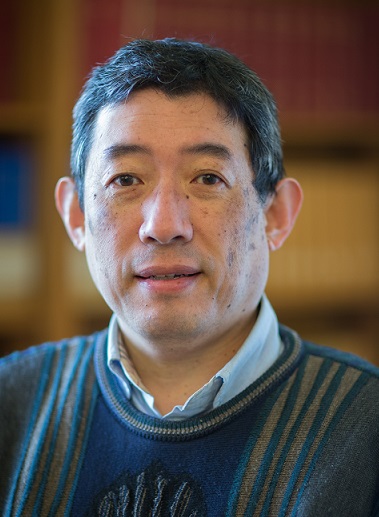 永野 隆 Takashi Nagano
永野 隆 Takashi Nagano
大阪大学蛋白質研究所 細胞核動態情報研究室、招聘教授
研究室HP:
Guest Professor, Laboratory for Nuclear Dynamics, Institute for Protein Research, Osaka University
Lab HP:
直径僅か10ミクロンの細胞核に2メートルものゲノムDNAを制御可能な形で収納する術を知りたくてこれまで研究を行って来ましたが、DNA量が2倍になるG2期には一体どんなからくりがあるのか、新学術班のご支援のもと、その秘密を少しでも明らかにしたいと願っています。
I have been fascinated by the fact that our genomic DNA as long as 2 m is kept fully controllable within a nucleus as tiny as 10 µm of diameter. However, it is even more amazing in G2 phase of cell cycle where DNA is doubled! I can’t wait to see how the cell manages to maintain homeostasis throughout cell cycle.
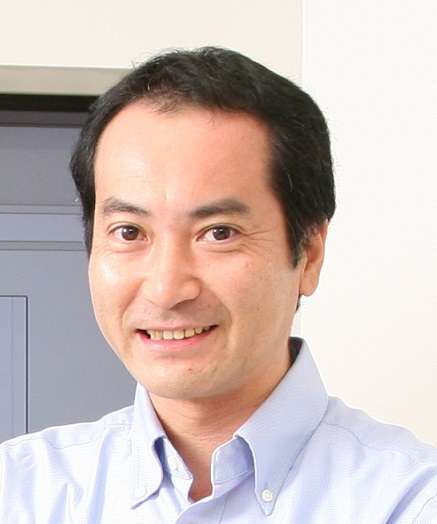 須山 幹太 Mikita Suyama
須山 幹太 Mikita Suyama
九州大学 生体防御医学研究所、教授
研究室HP:http://www.bioreg.kyushu-u.ac.jp/labo/bioinfo/index.html
Professor, Medical Institute of Bioregulation, Kyushu University
Lab HP: http://www.bioreg.kyushu-u.ac.jp/labo/bioinfo/index.html
Hi-C法による染色体の構造に関するデータの蓄積が急速に進んでいます。このデータを活用することで、染色体の立体構造に基づく遺伝子発現制御の理解、さらにその破綻により引き起こされる様々な疾患の発症メカニズムの解明を目指します。
The amount of structural information of chromosomes by Hi-C method is growing rapidly. The main objective of my research in this project is (1) to understand mechanisms of gene regulation based on the conformation of chromosomes, and (2) to unravel how breakdown of the correct conformation or misregulation of gene expression contributes to some diseases.
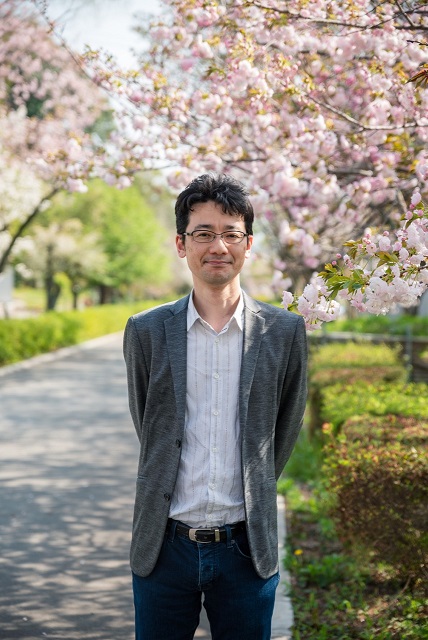 鐘巻 将人 Masato Kanemaki
鐘巻 将人 Masato Kanemaki
国立遺伝学研究所、教授
研究室HP:https://www.nig.ac.jp/labs/MolFunc/Jpn/
Professor, National Institute of Genetics
Lab HP: https://www.nig.ac.jp/labs/MolFunc/Eng/
私たちが開発したオーキシンデグロン技術を使って、染色体構造や機能に重要な役割を持つ因子の機能を調べます。複製タイミング制御、複製フォーク、染色体脆弱性をキーワードに、共同研究によりHi-Cなどの染色体構造的研究法も取り入れて研究を進めます。
By using the auxin-inducible degron technology that we developed, we are going to study the role of proteins important for chromosome structure and function. The key words of our study are the replication timing control, the replication fork, and chromosome instability. We also study chromosome structure by using Hi-C through collaboration with other groups.
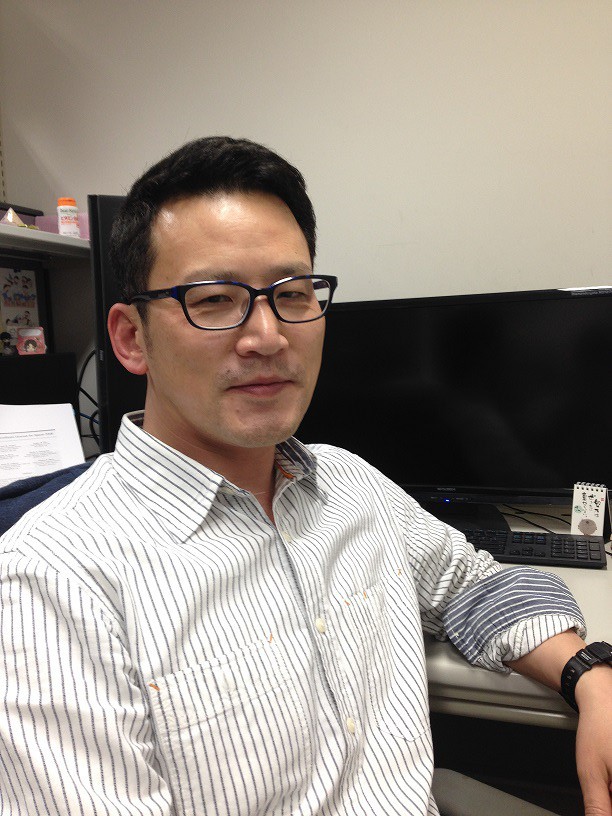 朴 聖俊 Sung-Joon Park
朴 聖俊 Sung-Joon Park
東京大学 医科学研究所 ヒトゲノム解析センター、特任講師
研究室HP:https://openlooper.hgc.jp/
Senior Assistant Professor (Project), Human Genome Center, The Institute of Medical Science, The University of Tokyo
Lab HP: https://openlooper.hgc.jp/
膨大なデータが日々産出されるようになった近年、大量データの数理モデリングで生命現象を理解する必要性が益々高まっています。我々は、染色体高次構造に関する解析データのデータベース化と、その数理的活用を通して染色体高次構造と遺伝子転写制御との関係解明に役立つ計算モデルの構築を目指します。
The rising influx of data lead from high-throughput experiments has forwarded the necessity of quantitative computational modeling. Here, by managing a database system for sequencing data about higher-order chromosome organization, we develop a computational modeling method to further our understanding of the impact of chromosome organization on transcriptional regulation.
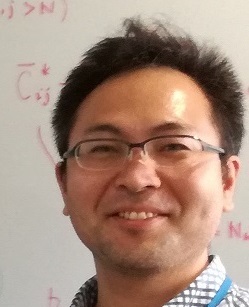 新海 創也 Soya Shinkai
新海 創也 Soya Shinkai
理化学研究所 生命機能科学研究センター、研究員
研究室HP:http://so.qbic.riken.jp/
Research Scientist, RIKEN BDR
Lab HP: http://so.qbic.riken.jp/
高分子物理・モデリングの観点から、Hi-Cデータのコンタクト確率の背後にある物理的メカニズムを明らかにしていきます。理論を通じて、Hi-Cデータとエピゲノムデータやイメージングデータとの間を繋ぐ仕事を展開します。
We will uncover the physical mechanism embedded in the contact probability of Hi-C data in terms of polymer physics and modeling. We are trying to bridge the gap among 4D nucleome data (Hi-C data, epigenomic data, imaging data, etc) through theoretical viewpoints.